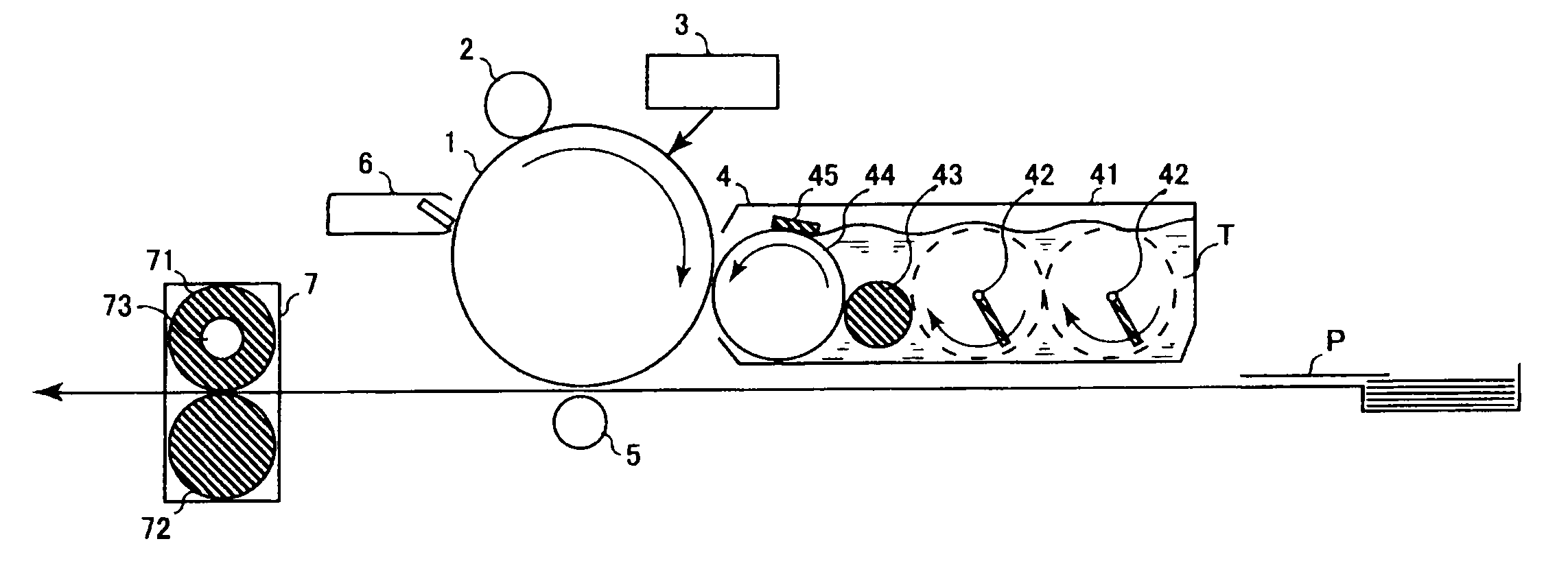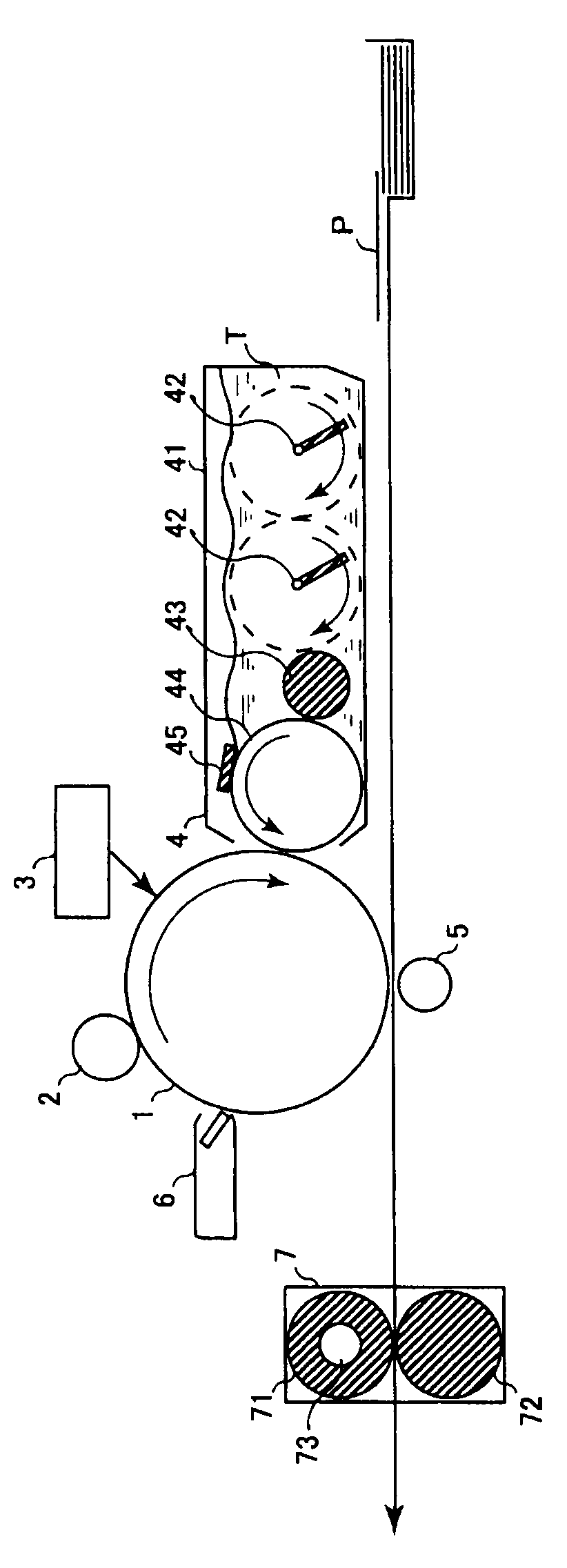Electrophotographic photosensitive body, image-forming device using same and cartridge
a photosensitive body and photosensitive technology, applied in the field of electrophotographic photoreceptors, can solve the problems of deteriorating electric characteristics, affecting the quality of photosensitive bodies, and affecting the quality of photosensitive bodies, and achieves the effects of favorable stability and durability, small fluctuations in electric characteristics, and excellent electric characteristics
- Summary
- Abstract
- Description
- Claims
- Application Information
AI Technical Summary
Benefits of technology
Problems solved by technology
Method used
Image
Examples
preparation example 1a
Preparation of Exemplified Compound 1
[0179]15.1 g of 4,4′-diformyltriphenylamine and 30.4 g of diethyl 1,1-diphenylmethylphosphonate were dissolved in 0.1 L of dimethylformamide (hereinafter sometimes abbreviated as DMF), and 16.8 g of potassium t-butoxide was added at from 25° C. to 35° C. After addition, stirring was carried out at room temperature for 3 hours. The reaction liquid was dispersed in 0.2 L of methanol, the precipitated solid was collected by filtration, and the obtained solid was dissolved in DMF again and purified by silica gel column chromatography to obtain 28 g of exemplified compound 1.
[0180]As a result of analysis by high performance liquid chromatography (mobile phase: acetonitrile, column: Inertsil ODS-3V manufactured by GL Sciences Inc.), 99 mol % or more of all stereoisomers regarding double bonds (a), (b), (c) and (d) represented by the formula (2), were a trans-form.
preparation example 1b
Preparation of Exemplified Compound 1
[0181]15.1 g of 4,4′-diformyltriphenylamine, 25 g of diethyl 1,1-diphenylmethylphosphonate and 10 g of cinnamyltriphenylphosphonium chloride were dissolved in 1 L of DMF, and 16.8 g of potassium t-butoxide was added at from 25° C. to 35° C. After addition, stirring was carried out at room temperature for 3 hours. The reaction liquid was dispersed in 2 L of methanol, the precipitated solid was collected by filtration, and the obtained solid was dissolved in DMF again and purified by silica gel column chromatography to obtain 25 g of exemplified compound 1.
[0182]As a result of analysis by high performance liquid chromatography (mobile phase: acetonitrile, column: Inertsil ODS-3V manufactured by GL Sciences Inc.), 74 mol % of stereoisomers regarding double bonds (a) and (b) represented by the formula (2) were a trans-form, and 98 mol % or more of stereoisomers regarding double bonds (c) and (d) were a trans-form.
preparation example 1c
Preparation of Exemplified Compound 1
[0183]15.1 g of 4,4′-diformyltriphenylamine and 40 g of cinnamyltriphenylphosphonium chloride were dissolved in 0.1 L of a DMF / toluene mixed solution (DMF:toluene=2:1), and a sodium methoxide methanol solution was added at from 25° C. to 35° C. After addition, stirring was carried out at room temperature for 3 hours. The reaction liquid was dispersed in 2 L of methanol, the precipitated solid was collected by filtration, and the obtained solid was dissolved in DMF again and purified by silica gel column chromatography to obtain 25 g of exemplified compound 1.
[0184]As a result of high performance liquid chromatography (mobile phase: acetonitrile, column: Inertsil ODS-3V manufactured by GL Sciences Inc.), 45 mol % of stereoisomers regarding double bonds (a) and (b) represented by the formula (2) were a trans-form and 98 mol % or more of stereoisomers regarding double bonds (c) and (d) were a trans-form.
PUM
| Property | Measurement | Unit |
|---|---|---|
| 2θ±0 | aaaaa | aaaaa |
| thickness | aaaaa | aaaaa |
| thickness | aaaaa | aaaaa |
Abstract
Description
Claims
Application Information
 Login to View More
Login to View More - R&D
- Intellectual Property
- Life Sciences
- Materials
- Tech Scout
- Unparalleled Data Quality
- Higher Quality Content
- 60% Fewer Hallucinations
Browse by: Latest US Patents, China's latest patents, Technical Efficacy Thesaurus, Application Domain, Technology Topic, Popular Technical Reports.
© 2025 PatSnap. All rights reserved.Legal|Privacy policy|Modern Slavery Act Transparency Statement|Sitemap|About US| Contact US: help@patsnap.com



